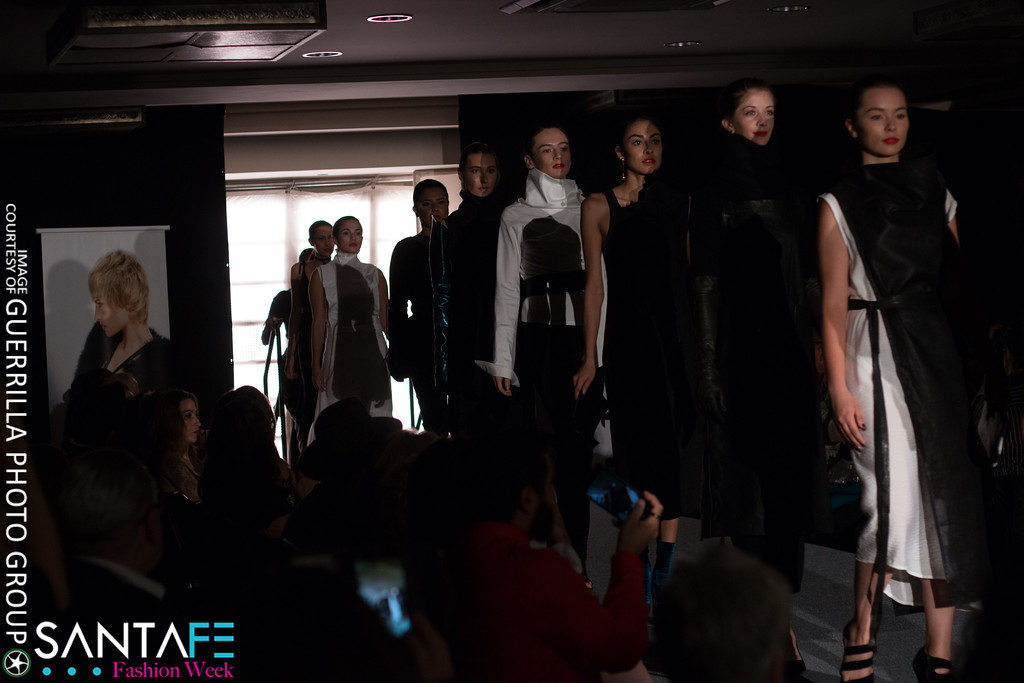
Santa Fe Fashion Week recently finished its 6th Season at the Drury Plaza in Santa Fe, New Mexico. While I spoke with fashion designers and researched the ever-changing market in fashion trends and how fast the business changes, I discovered that Amazon is toting a new offering a new clothing delivery service, dubbed “Prime Wardrobe.” According to Ángel González, of the Seattle Times, this new service will ship a box of clothes curated by hand to the customer directly. This service operates in a similar manner to Trunk Club, Stitch Fix, and other fashion delivery services. If there are any items a customer doesn’t want, they can easily be placed back in the box and returned using the included shipping label. How can emerging designers compete with such a Goliath?
To find out, I freshened up on the history of the industry itself. New York Fashion Week, which began as “Press Week”, was essentially a trade show established during World War II to help shift the focus from French designers towards American designers. Fashion insiders were invited with the hope they would place orders. The media was invited as a sort of free publicity, using writers to promote the fashion with the aim of getting consumers excited about the upcoming season.
But that time has since passed and all of that has changed. First, “fast fashion” (mass production, low quality) brands entered the scene and began churning out cheaper versions of runway fashion. This new knock off process dulled the roar of high-fashion collections by the time they hit stores. Unintentionally, technology also entered the equation with fashion bloggers posting reviews and photos immediately after the runway shows. Fast fashion brands used these posts to mass produce knock offs, once again dulling the original concepts.

There’s been an ongoing dialogue in the industry about best practices. As mentioned above, the standard practice before technology was to show clothing lines on the runway and produce as ordered by fashion buyers (middlemen to department stores/boutiques) and then they were sold to the public. The newer practice still utilizes the runway show with designers streaming from the event and striking while the iron is hot by having their fashion immediately available for purchase to the public, effectively bypassing the fashion buyer.
The introduction of new technology gives a few added benefits for the designer. Not only can a designer have an immediate sale but they also can be much closer to their patrons. Watching their designs walk down the runway, seeing the live stream of their finished product, and having an immediate sale will give them real time feedback from their patrons. . This positive response benefits their creativity giving them immediate gratification that their vision resonated with the public. More importantly, the designer can retake control of their brand from the fast fashion knock offs.
This is the direction fashion designers need to take to develop their own brand identity and connect on a personal level to even the playing field. Brit West,who recently showed at Santa Fe Fashion Week, is an exemplary of this. West used all avenues of social media such as mini documentaries leading up to, during, and following the show, video streaming, and pictures to connect with her following. There are some designers that stick with waiting for orders to come in and then manufacturing. This may be especially true for smaller or emerging designers, due to a more limited budget.
Another avenue used by well-established designers is private viewings. The talented fashion designer with roots in New Mexico, Tom Ford, showed his collection at an intimate dinner at the Four Season. While guests were enjoying the show, the very same products were already in stores. Rebecca Minkoff, Tommy Hilfiger, Burberry, Vêtements, and Thakoon have all presented versions of the “see now, buy now” concept.
It is increasingly important for well-established and emerging designers to use all available avenues to promote their designs. That’s where Santa Fe Fashion Week shines; it provides an arena to fill the gap. We offer an professional runway show that emerging designers use as a starting point and a platform for established designers to branch out their brands. We also offer a runway show with new technology for designers that employs the “see now buy now” business approach. We are able to do this by pulling together fashion designers, often up to 15 , to create opportunities for networking, relationship building, and providing fashion/media resources. Sante Fe Fashion week offers a buyers lounge as well as vendor booths to complete the “see now buy now” approach.

Santa Fe Fashion Week is constantly working with designers to come up with creative concepts for its shows. Santa Fe,with it’s uniquely southwestern tapestry, offers its designers a range unlike others from a garden show at the Drury Plaza to our new “Fashion Art” event. This new free interactive event is set at the Santa Fe Plaza and promotes fashion to the local community and tourists by allowing participants to immerse themselves in a fashion photo shoot.
Runway shows, in conjunction with buyer’s lounge’s, vendor booths and fashion designers leveraging social media is a great way to connect with their consumers and stay relevant.
website: https://www.santafefashionweeek
facebook: https://www.facebook.com/santafefashionweek
Instagram: https://www.instagram.com/santafefashionweeknm


You must be logged in to post a comment.